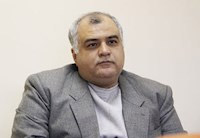Rationalization of Oral History Books (part III)
Rationalization Is Variable Over Time
Akram Dashtban
Translated by: Fazel Shirzad
2018-6-12
Note: Following report is based on an invitation in which history experts are asked questions about oral history. In this regard, one of experts, as his perspective, has answered to one of questions titled "The amount of rationalization and appendix in oral history books". We'll read these comments as follows.

In an interview with Iranian oral history website, Seyed Qasem Yahusseini, writer and researcher of history, spoke about rationalization: "The rationalization is explanation and description of ambiguous contents of a text that appears in the footnote or appendix. Rationalization about photo also includes a description of historical photographs and information on place, time and photographer.
He believed that rationalization is relative, and added: "Rationalization are different among people. If a book, for example, is written for students, there is a different way of rationalization in writing the book by researchers. In fact, rationalization is different over historical times. If an author wrote a book about Gholam Hossein Sa'edi or Dr. Ali Shariati in 1360, s/he wouldn't need for a rationalization, but today if a book is written about Shariati, many topics should be rationalized in footnote or the end of book. In other words, rationalization is a floating issue that is different according time and place. For example, if you write a book about province Bushehr, you do not need rationalization to explain places, but if it is a country issue, places and other parameters should be rationalized.
Yahusseini went on to say that oral memory is a subset of oral history, and rationalization is not same in these two formats, and added: "The book's rationalization should not be long. All the terms should not be mentioned in it, except in rare cases; in the manner in which author himself/herself has gained that information. For example, Raheem Raisnia published a book titled "The Last Bulwark of Liberty". This book included the series of articles by Seyed Ja'far Pishevari published in Haghighat[1] newspaper and its publisher named Seyed Mohammad Dehghan. Raisinia, at the end of book of Seyed Ja'far Pishevari, introduced newspaper Haghighat and Seyed Mohammad Dehghan and presented piece of information that was published for first time; or appendix of Mohsen Kazemi's books [1]which is as an independent investigation.
He explained in more detail about the amount of rationalization in books: The text should be so perfect that it does not need to be rationalized, the text included in the footnote should be brief and minimal. If something is written by referring to generations, places or people, it should be mentioned in general terms, and if rationalization is about geographic location, it should be mentioned alphabetically.
Yahusseini further referred to rationalization of photographs in oral history books and said: "If a photo is rationalized accurately, it will become a document in which you must mention location, persons in the photo, the date of the photograph and, as far as possible, the name of the photographer."
He goes on to say that rationalization is considered as a advantage of a work:" In the past, it was a very difficult task to rationalize, but today it's easy to do by using internet and various research sites. Rationalization allows addresses to get acquainted with characters, and gaining references and additional resources as well. The more book is power in providing references and resources, the more book is valuable text for readers. Of course, author must be careful that rationalization of book not to be an inappropriate one.
Iranian oral history website asks question to experts about oral history, and publish responses to readers. Total responses will have remarkable results. If you have any questions, please feel free to submit it via this page to read comments from experts of oral history!
Number of Visits: 4604








The latest
Most visited
- Medal and Leave - 3
- A Statistical Glance at the Oral History Archive of Iran
- In Memory of the Son of the Soil; A Clear Picture of Patience and Freedom
- Medal and Leave - 4
- A Memory of an Army Aviation Pilot
- The 370th Night of Memories – 1
- The Oral History Website and Its Position
- Towards the Thousandth Issue
Monafeghin: A New Deception
July-August 1989Following the discussions around the asylum of Iraqi prisoners of war in Iran during peace negotiations, the Iraqi side, not wanting to fall behind, launched their own campaign to offer asylum. At the outset, they attempted to attract prisoners by making grand promises ...
Supports from Guilds and Bazaars peaple
Memoirs of Haj Hossein FathiOur base of operations had become the Saheb al-Zaman Mosque in the Kamp-Lou neighborhood of Ahvaz. With the assistance of Brother Khani and his companions, we began preparing hot meals and sending them to the frontlines. We ourselves, along with several fellow merchants from the bazaar, entered the conflict zone, bringing warm clothing, ...
War Health
Narrated by Dr. Ali Mehrabi TavanaThe book War Health is an oral narrative by Dr. Ali Mehrabi Tavana, a commander in the health sector during the Sacred Defense era. This book, in the form of six chapters and twenty conversation sessions, covers the narrator’s life from birth to the end of the [Iranian] Eight-Year War. The interviews and compilation of the book were conducted ...
Agents in Search for the Fighter
[Interview with Fatemeh Amir Hosseini 2019/03/08.] The agents were always at our house. They would come day and night, turn the house upside down, mess up the library. For example, I remember we had the book Eqtesadona (Our Economy) by Mr. Sadr, and Imam Khomeini’s Resaleh (Treatise). We had many books—they would pack some of them up and take them away. Then the next day, they would knock again. Back then, our house was on Ghiyasi Street. We were really distressed.

